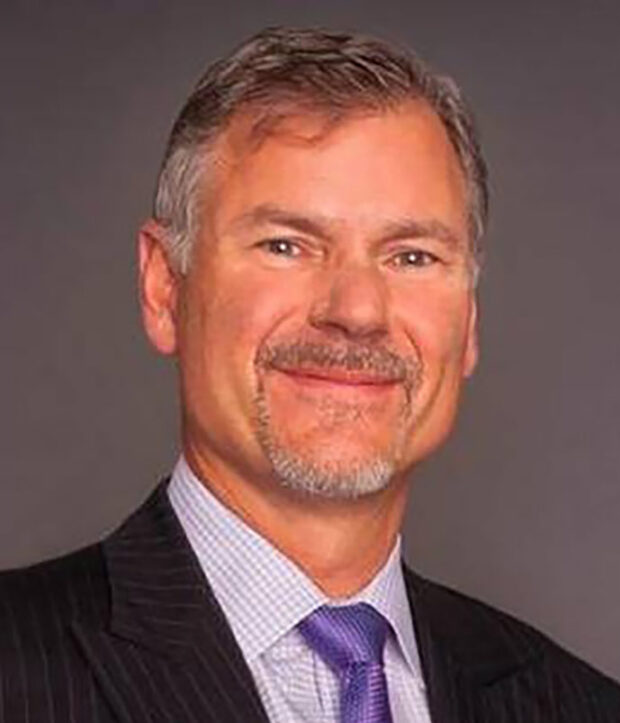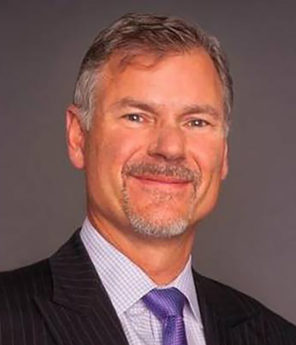HOME | ABOUT US | MEDIA KIT | CONTACT US | INQUIRE
HOME | ABOUT US | MEDIA KIT | CONTACT US | INQUIRE
The CEO at Burns & McDonnell addresses the challenge of safeguarding a corporate culture amid a time of rapid hiring, challenges posed by remote work, a potential recession and more.

 Q: Not many companies in this area have hired the raw numbers of people you all have over the past decade, and that kind of influx must have some effect on even a carefully crafted culture. How do you channel that change to produce the cultural effect you’re looking for?
Q: Not many companies in this area have hired the raw numbers of people you all have over the past decade, and that kind of influx must have some effect on even a carefully crafted culture. How do you channel that change to produce the cultural effect you’re looking for?
A: It’s always a challenge, right? You’re bringing in people who don’t know your organization, trying to assimilate them technically and culturally in what you stand for. We have an on-boarding process, that’s pretty standard with all companies, but the thing that helps us assimilate new folks is good mentorship and a good, collaborative environment inside the office. I’m not sure how you can do that when everybody is working from home, but we work from the office, mainly—still not 100 percent back, but close. So there are lots of mentors, tutors, teachers and people you can ask questions of and learn from. That’s the key when you have that many new people coming into your organization.
Q: Even within that standard-type on-boarding, are there things specific to your processes that differ from other large companies?
A: We do a lot of things other companies do, helping new people understand the expectations, showing what our culture is all about, and obviously, a rigorous training program. What makes us unique as an organization is our culture of caring, built on employee-ownership. Employee-Ownership creates a strong connection among our people that drives accountability, collaboration and innovation. We can show videos or talk about our culture, but what really makes an impact is showing them how we interact with each other to create an environment where we want everybody to thrive.
Q: Does a corporate culture undergo a shift when a certain percentage of the staff is new to the organization? That is, is it at greater risk of unintended change if you on-board 10 percent of your staff in a given year, as opposed to 5 percent?
A: That is a real key, to not grow too fast. You can overwhelm everybody and their ability to provide that environment to on-board people. We’ve never had a hard, hard number, but I’ve said 15 percent was the cap, and 10 percent was the point where you say “We’d better start being very intentional with our growth.” So the target is about 10-15 percent, which is our plan for this year. Our forecasts show us running out of space in KC in the next few years so our next office expansion is a topic now. On-boarding is not one size fits all. But obviously, you don’t want to grow too fast. You could potentially lose your brand and your culture.
Q: So when you rolled out the 1898 & Co. consulting initiative a couple of years ago as a separate brand, did that require balancing of those with new skill sets with folks who were already part of the company?
A: 1898 & Co is a rebranded internal organization that already existed, but was retooled. 1898 & Co is our business, technology, and cybersecurity consulting arm. It has been growing with a lot of people as we re-imagined what our consulting services could look like. Our existing talent was great but when we mixed that talent mixed with many new people and skill sets it gave us more opportunity to help find solutions to our clients’ challenges.
Q: It’s not just numbers of bodies you’ve brought on board, but a clear demographic change happening at the same time as Millennials have come to dominate work-force numbers. Has that generational shift produced additional pressure on cultural norms?
A: I’m a little contrarian about stereotyping people based on when they were born. Human nature has been human nature since the beginning of time. People want to make a living, take care of themselves and their families, take care of the environment for their kids so they can have it better than they did themselves as parents. As I travel the world and am around people everywhere, I’ve found that they all have that same fundamental desire.
Q: But not much of a generational difference in the workplace?
A: Fundamentally, people are people. Yes, the younger generation developed their talents and relationships differently than I did growing up. So we can help them develop those interpersonal skills, but many already have them. We look for technically good people that have great communication skills when we hire. Stereotyping people based on the year they were born isn’t a fair assessment.
Q: What else are you looking for with new hires?
A: The delayed-gratification people who go through science, math, engineering and architecture, who aren’t wanting that instant gratification. Those are the kinds we already have in our organization, so the kinds we look for haven’t changed much. The thing that’s changed for us is how we do hiring to find people with a higher level of communications skills than 40 or 50 years ago, when we were looking mainly for the technical expertise. Technical expertise is pretty common now; things like leadership skills are not as common. Those are the people we look to bring into the organization.
Q: So it sounds like there’s no issue meshing those younger workers in with GenX and the remaining cohort of Boomers?
A: It’s still all about people being nice to each other and helping others. That’s common everywhere. The misconception is that the younger generation doesn’t want to work as hard as the people previous to them. But it’s a misconception because society itself has changed. I didn’t have to work as hard as my parents, because technology made things easier in my life. My parents didn’t have to work as hard as my grandparents, and my daughter doesn’t have to work as hard as I did because she had technology and other advances that made her life easier than mine. Hopefully that’s true for future generations of kids. We find a lot of people who are very dedicated to our company and our customers straight out of college, who are hard-working and really care about what they do and how they act.
Q: Trying to defend a culture through the past 2 ears of a pandemic must have produced some maddening challenges, culturally and operationally. Which ones were the thorniest?
A: It’s been an interesting societal experiment we just went through, with how the pandemic affected people’s psychology and thought processes. That’s been the hardest part for me and the organization to navigate because there were such divergent views about everything associated with the pandemic. The reaction to it, what people believed was the right way to deal with the pandemic, politically and from the medical community. It was a very divisive time because of that. We’ve always been an organization high on the cohesive side of working together. The pandemic drove wedges between people, and it didn’t help that people weren’t together as much. So how do you bring everybody back into the fold about working together and being kind and helping each other, in an environment where too much time had been spent doing just the opposite? People’s anxiety was very high and morale was low. Was it because people were home and worried, or not in their social and spiritual networks that could help them cope with all that? Which of those were the leading factors? My guess is that all of them contributed. A lot of businesses were doing fine, but for a lot of them, the psychology and camaraderie still suffered.
Q: Where do you all stand in terms of restoring pre-pandemic levels of office-work numbers on the campus there?
A: We’ve been mostly back since the summer of 2020, and almost 100 percent back since summer of 2021. But we also put more flexibility into work schedules for 2022.
Q: Apart from cultural concerns, are you worried about prospects for a recession?
A: There hasn’t been a time in history you can look back at that compares with where the economy was then and where it is now. That’s a hard, hard predictor. We’re going to have some warning shots before it happens in the United States. Asia and Europe will lead us into whatever the economy looks like post-COVID, and the reason I say that is that they have more challenges than we have in the U.S. We still have comparatively low energy prices and a stable economy. With Europe and Asia, things are more tenuous, especially with energy issues exacerbated by the Russia/Ukraine war.
Q: So, do you expect a downturn?
A: I’m kind of an amateur economist, and talk to our economic advisers a lot, so my personal opinion is that we still have too much fuel on the fire. Interest rates are still not high by historical measures, but they are climbing; inflation is still not transitory, it will be around for a while. The money supply is still really high because of stimulus checks and savings. With low interest rates, we saw some of the lowest debt service as a share of GDP in the history of the U.S., All of those are fuel on the fire. If you have $4 or $5-a-gallon gasoline, and interest rates at 5 or 6 percent, things will start pulling back really, really quickly. When you factor all those issues together, where we end up is still a big question., The Fed should have probably pulled back sooner. They were doing the best they could with the information that was out there, but now they pulling back fast, slamming on brakes so we don’t run into the car ahead of us. What’s the side effect of that?
Q: What about inflation?
A: We’ve got to get inflation under control; it’s worse than high interest rates. Inflation makes decisions so hard, not knowing what things will cost. If inflation is at 10 percent, and the stock market down 20 percent, everybody has lost 30 percent of the buying power in their portfolio, depending on how they were invested. That puts a damper on things. I read recently that retailers are seeing demand decrease with higher pricing, and that’s going to pull back inflation, too. We’re in for a slowdown, but hopefully it’s a soft landing, not a hard landing. Our business and markets continue to stay very, very robust and strong. Usually, we’re slow going into and coming out of recessions in our business, but things are absolutely booming right now.